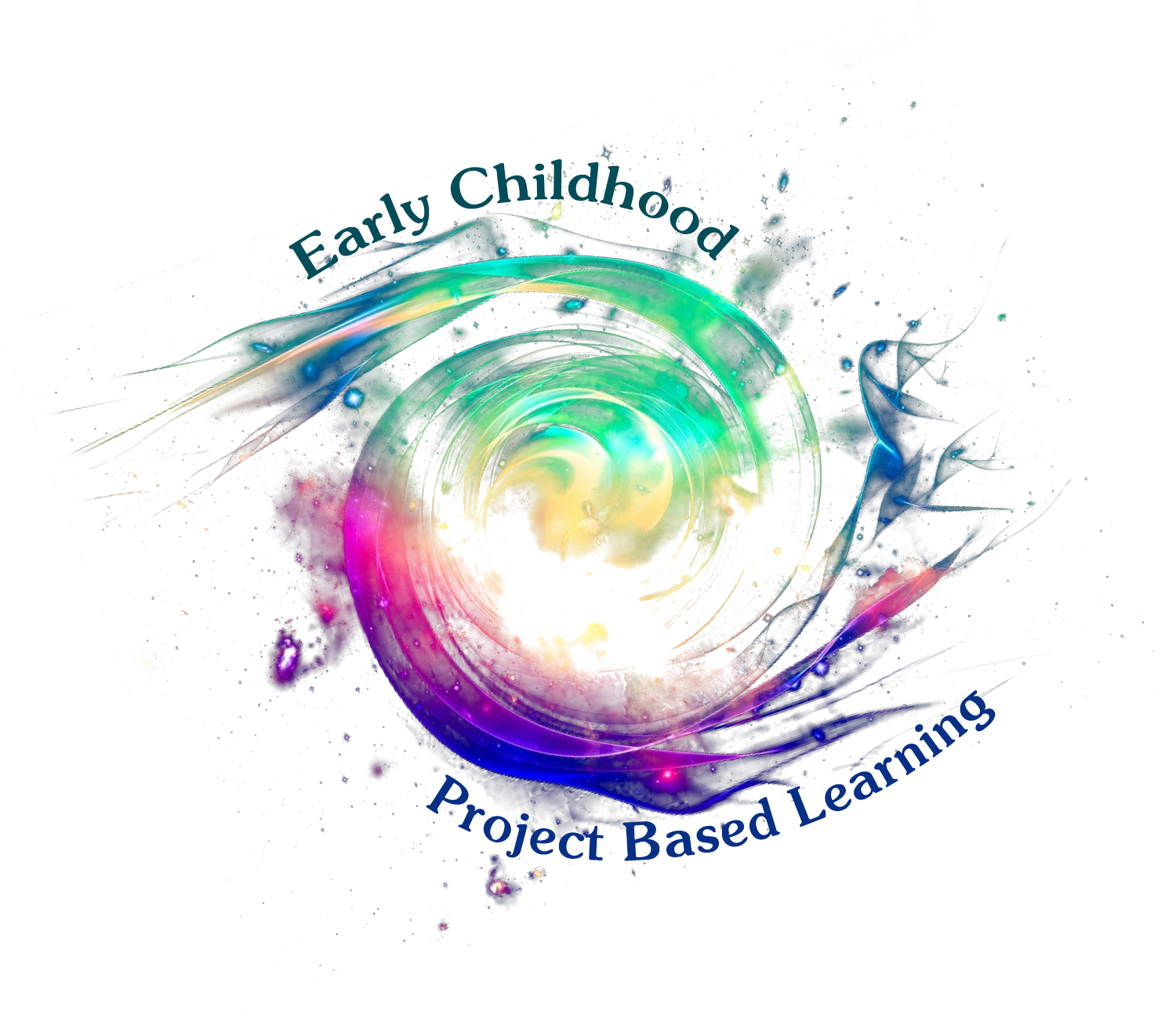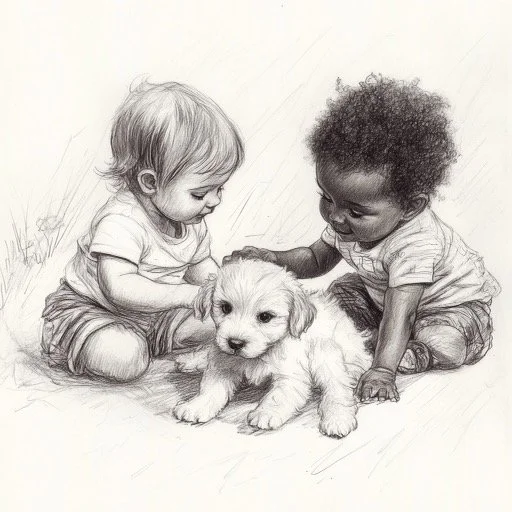Honoring Curiosity: Toddlers, Puppies and PBL
It was a cold, snowy mid-February morning when I spied a small dog outside the window of my classroom of one-year-olds. Stooping, I picked up one of the children in my classroom and pointed, “Look, what do you see?”
“Puppy!”, came the immediate reply.
Immediately ears perked up all over the classroom as children rushed over clambering to be picked up to see.
“Puppy, puppy, puppy!”
One child, about 14 months old, came up to me. He had gathered every dog in the classroom. Stuffed dogs, a dog pillow, a resin dog and a book about dogs. This was a pivotal moment in my work as an educator as I watched the idea of a dog, who children saw through the window, become a focus of study for six weeks or more.
I had been teaching for about ten years at this point. This career chose me. I was a military spouse in need of a job I could take with me through multiple moves. I became a family child care provider with seven children of mixed age, two of which were my own, in my home. It was in Alaska that I learned that infants and toddlers were my people. Each of these amazing humans introduced me to their agency and capability which opened my eyes to the ways in which they truly drive their own learning. This particular classroom had ten one-year-olds, ages 12-24 months.
Many of the elements of PBL commonly seen in older age classrooms, such as a driving question and finding out what the children already knew about a given topic seemed out of reach due to the age of the children in the classroom. Many children did not yet have expressive language. However, I could see what they could show me through their choice of activities and I could enlist families as partners. The idea that very young children can’t communicate is simply not true. Infants and toddlers are prolific, articulate communicators. Children’s body language, eye contact and even their snuggles communicate and elicit responses in truly authentic ways giving educators powerful feedback about their curiosity and wonder. As educators, our role is to pay deep attention to what they are communicating.
Project Learning Goals
Our learning goals for the project developed as the children’s interest grew and we discerned what they already knew. Perhaps that was one learning goal, at least for us as educators, to see what knowledge children already had and the ways we could expand that. Additional learning goals included:
Making visible the ways dogs fit into children’s lives by bringing them into the classroom through pictures and stories.
Highlighting our classroom community of dogs in each child’s life.
Connecting children to more vocabulary in relation to dogs.
Highlighting the ways dogs help humans live their lives. It isn’t unusual to see dog sleds on the river during the winter. Two major dog sled races take place in Fairbanks, the Yukon Quest and the Junior North American Sled Dog Races. We also had parents who owned teams. We would also encounter dogs on our walks and see dogs helping their humans with sight and other health issues.
Public Product
A book of our learning and neighborhood adventures quickly became the obvious choice.
I must also confess that I did not go into this thinking this could be a project, or even a unit of study. The children determined that it was going to be a project by their sustained attention to all things dog for about 6-8 weeks. Many educators look at me with incredulity when I share how this came about and that it actually had all of the hallmarks of a PBL unit with one year olds! I believe that many of the best projects are those that come into our classroom through spontaneous observation and curiosity. Age is not a barrier if educators are also engaged in deep noticing and attunement with their children, and there are many other ways that children could engage in inquiry.
“Many children did not yet have expressive language. However, I could see what they could show me through their choice of activities and I could enlist families as partners.”
Ways Children Engaged in Inquiry
Pictures of their own dogs posted in the classroom.
Pictures of local events in town with dogs, see aforementioned sled dog races.
A visit from a beloved service dog.
Regular neighborhood walks to “visit” dogs that we would regularly see.
Reading every dog book I could find over and over.
Looking back I realize this was one of those pivotal moments in my teaching career where I learned just how capable and agentic very young children are as learners. If they are interested, they will pursue knowledge about a topic, for a connection to their learning and revisit and expand on their learning over time. Both the pictures of family pets and the walks in the neighborhood visiting dogs made visible the ways that this happened. Children would literally guide the walk to see specific dogs cheering and yelling “Hi” when we drew close.
Reflection and Feedback with Toddlers
Looking at the ECPBL Project Planning outline, which I was introduced to many years later during Sara Lev’s Residency at our school, and thinking about planning for reflective practices and feedback opportunities, one might wonder, how did this work with one-year-olds? The answer is really the same way that these practices do with older children with a touch more one-sidedness. Very young children have expansive receptive language capability and while they may not articulate their learning in long sentences, young children are quite adept at getting their point across. Have you ever been in the presence of a group of 12-24 month olds? Have you noticed how they track the movements of things and people they care about? They also communicate so adeptly with their eyes, babbles, sometimes words or brief phrases and their dismay when we don’t get it right. When I reference deep looking, I am talking about educators who are attuned to the children and can “read” their body language and approach this with curiosity and wonder. They engage in co-learning with their very young counterparts in the space, recording children’s ideas through pictures, phrases captured on sticky notes for later reflection and our own delight in being in community with these children.
“One might wonder, how did this work with one-year-olds? The answer is really the same way that these practices do with older children with a touch more one-sidedness.”
Reflective Practices
This was primarily done between myself and my co-teacher. We would engage during naptime by asking, what did we see today?
How did this differ or stay the same as prior iterations?
What new materials resonated with the children and engaged their attention? Why did we think that was? What did we want the children to learn when we put those materials out?
What new meaning did we see the children applying to their world?
Feedback Opportunities
During the course of the day, teachers would engage in question and answer loops with the children. Questions might emerge while observing a new neighborhood dog, visiting a familiar dog or simply sitting with children as they looked at family dog pictures. We would use these holistic opportunities to offer new information.
One of my favorite times of the school day was when children were waking up from nap. I had a twin mattress on the floor that we used as a cozy space. I would sit and as children woke up they would come for snuggles. I had books, pictures or other materials that I would show them. “What do you see?” “Hmmm, I wonder if you notice a dog that looks like yours?” “This fur is rough, this fur is soft and smooth, which do you like better?” “Which one feels like your dog?” The answer may be a finger pointing to something that they noticed or a nod of a head against my shoulder when they agreed with something I said. To an observer this would have looked very one-sided. For me, it was a window into children’s thinking and learning as they responded. Children would often come back to explore the newly introduced materials later. That time of connection was a simple way to offer new information when I had their sleepy, yet undivided attention.
Interestingly, when I was thinking about the best way to incorporate the children’s voices into the creation of the book, they took it into their own hands, literally. I had the pages and the photos laid out on the table and, ever curious, the children came to see what I was doing. Each of the pages had their picture already on it. As only young toddlers can, they came over and looked at the pictures, saw the pictures that were of a dog that was special to them and would point and exclaim. I began asking which ones they wanted on their page and if they wanted to do it themselves. You can imagine two teachers and ten young toddlers. It was a bit chaotic, but we managed, not in a neatly organized and beautiful fashion, but in an authentic and joyful representation of our class and their dogs, on paper, for the classroom bookshelf.
“Very young children are competent, confident, capable learners IF we give them the space and time to engage, observe deeply and with curiosity ourselves and reflect together.”
My Advice
My best advice is, embrace the mess. It is inside the mess that the beauty and authenticity reside. Toddlers are real. They embrace the world without bias and with deep curiosity. Simply follow their lead, capture as much as you can and give them many opportunities, every day, to engage with the materials that they are curious about.
When I noticed that they were sustaining the inquiry into dogs, I often made plans for the next day or week. Sometimes they worked, more often than not, the children had other ideas. By being open to what they wanted, it opened a new world of learning for me. Together, we learned. Throughout our explorations of our neighboring community, visiting and revisiting the dogs we made friends with, we became acquainted with other sights and sounds, people and places. When families shared photos of their dogs, they too would offer a story that we could reflect back to each child. All of this not only added to knowledge about dogs, but also our community. Very young children are competent, confident, capable learners IF we give them the space and time to engage, observe deeply and with curiosity ourselves and reflect together.
The reason that this project has stuck with me over the years in the way few others have is due to the connection I had with the children in their learning. Their enthusiasm and engagement made me lean in, perhaps in a way I never had before. It also opened a door with an invitation for me to learn. Did the children learn? Yes. The children in my class avidly engaged with learning about their community, dogs and how they fit into local culture, and why each of them found dogs important to their families. I also know for sure that the children learned that their contributions were worthy of being honored and shared.
That book was the most popular one on the shelf.
Rixa Evershed is the Beginning School and Auxiliary Programs Director at Charles Wright Academy in University Place, WA. She has been in the field of early childhood for 25+ years. Throughout her own learning journey, she has been supported by many mentor teachers that make her learning, shared here, possible. Connecting children to their own and each other’s capability, humanity and joy is her goal every single day.

